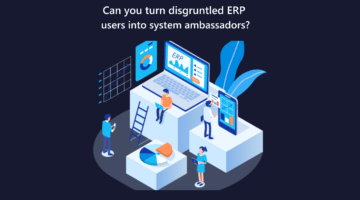By Melanie Mondon.
Let me introduce myself. My name is Melanie Mondon and I work with Acmeda, a family business and market leader in high quality window furnishings supplying a global market of manufacturers, distributors and wholesalers. My current role is Business Systems Analyst and NAV Implementation Project Manager. We have been working closely with Fenwick for several months now, with Rubina Usman as our Principal Consultant, backed by a strong team of consultants working hard to successfully implement our shiny new Microsoft Dynamics NAV ERP system.
I must admit I was a little excited when Rubina asked me to contribute a blog post. Not only because it would be my first published work, and Fenwick’s first ever customer blog, but also because of the opportunity it represents to write about an implementation from the customer’s side.
One of the biggest lessons I think I’ve learned is how easy it can be to underestimate the complexity of business processes and requirements. I’ve worked on four ERP implementations now, and of those four, only one was delivered on time and under budget – and that business was dealing with the consequences of a rapid implementation for several years to come. Two of the four were SAP (large and complex in comparison to NAV) and both required several changes to the Go-Live date along with substantial adjustments to the budget. One of them even ran for seven years! NAV hasn’t been quite to that scale although I’ve found several similarities between them.
It seems to be, that the further you progress through an implementation, the more detail and complexity arises. Of course this is a logical progression, though it raises the question – how can this be addressed to avoid timeline and budget creep?
For a business model that should be relatively simple, we at Acmeda seem to have a lot of processes that are complex. In the simplest terms – we buy and sell product. A small amount is manufactured or subcontracted locally; the majority is purchased and distributed. Sounds pretty straightforward right?
It seems the challenge is how to adequately scope and workshop the business requirements thoroughly enough to not only be confident that the budget and timeline are suitable, but also that the business needs will be adequately met by Go-Live. The very nature of many projects requires that cost and timeframe be agreed before any work can start.
Next week I will discuss the process of workshopping, requirements gathering and ways of handling scope creep.






